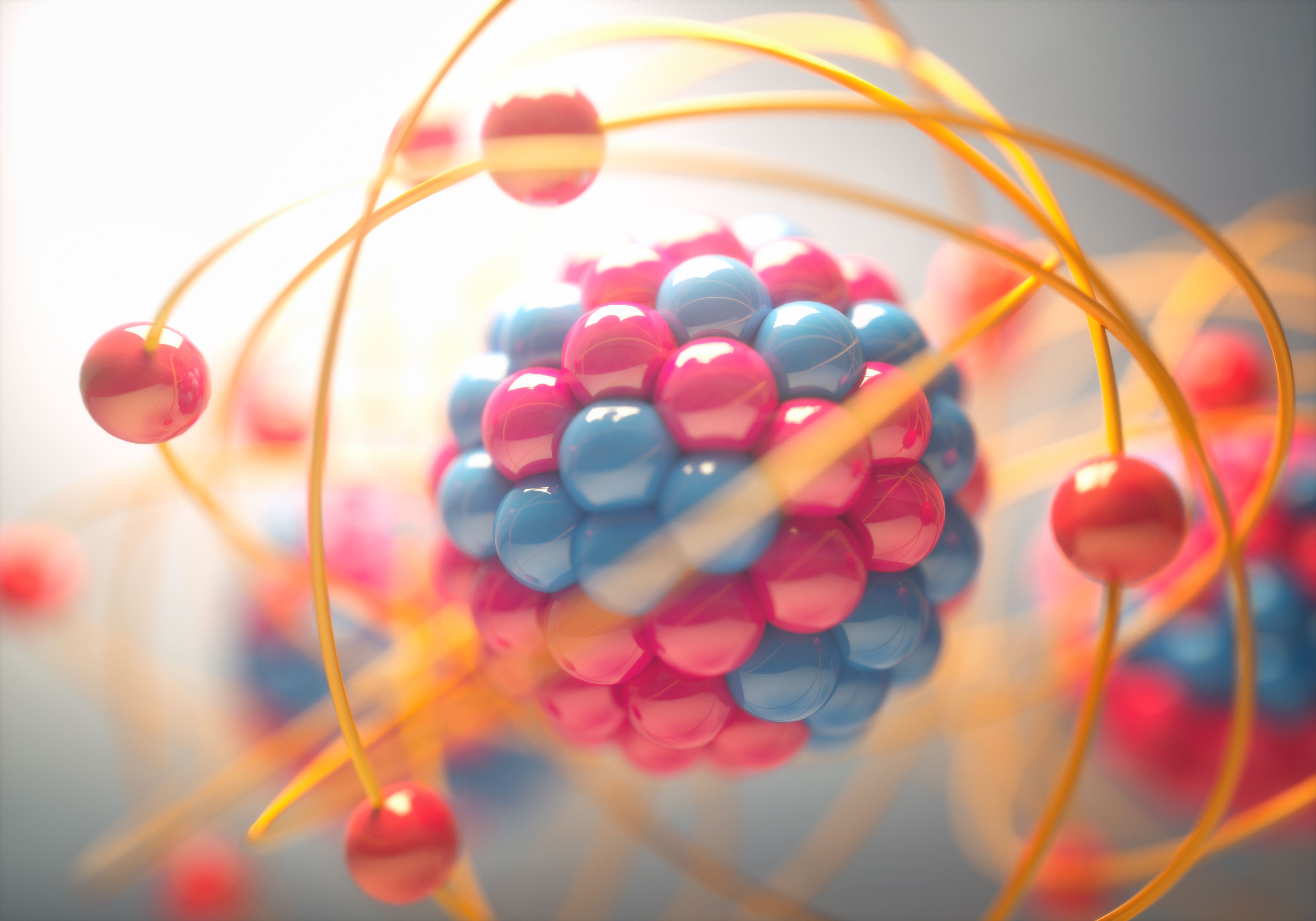Excited State Proton Transfer Based Fluorescence Measured with Kaempferol Powder
In a recent study from the Autonomous University of Puebla (BUAP), scientists studied how excited-state proton transfer based fluorescence works with Kaempferol powder and different solutions.
In a recent study from the Autonomous University of Puebla (BUAP) in Puebla, Mexico, scientists studied how excited-state proton transfer based fluorescence works with Kaempferol powder and different solutions. Their findings were published in Spectrochimica Acta Part A: Molecular and Biomolecular Spectroscopy (1).
Atom, the smallest constituent unit of ordinary matter that has the properties of a chemical element. | Image Credit: © ktsdesign - stock.adobe.com

Flavonoids, which are found in various plants and fruits, have become targets for use in drugs and food supplements, partly due to their antioxidant and anti-inflammatory properties. One of the most common flavonoids is kaempferol (KMP), which has been intensively studied for its beneficial effects in fighting diseases like cancer and COVID-19. For this experiment, the fluorescence (FL) emission of KMP powder and its solutions were studied using polar and non-polar solvents.
Dual FL and other special features within absorption and emission spectra of flavonoid solutions were analyzed using excited state intramolecular proton transfer (ESIPT). ESPIT can explain absorption and emission processes in flavonoids if its structures allow for hydrogen bonding between a proton donor and proton acceptor. For this experiment, the scientists studied the FL emission of KMP powder and KMP solutions prepared with different solvents, such as methanol, acetone, and chloroform. From there, the energies of ESIPT-based FL emission corresponding to the maxima of the FL spectra of KMP powder and solutions were calculated, then compared to values obtained through experiments. Additionally, the FL spectra of KMP and Q hydrate powders were compared to consider how electronic transitions stemming from ESPT of neighboring molecules contributed to the process.
To calculate the characteristic energies of absorption and emission of KMP molecules in vacuum and in solutions, the scientists used time-dependent density functional theory. This is a quantum mechanical framework that describes the dynamics of interacting electronic many-body systems formally, exactly, and in a computationally efficient manner (2). Comparing the results of computations with the measured FL spectra, the FL band can be associated at 1.9eV with emission from excited state intramolecular transfer of the proton of a –OH5 hydroxyl group. The FL emission at 2.45 eV is related to the –OH3 proton transfer.
From there, the FL spectra of KMP powder was measured using two different excitation energies, 3.06 eV and 2.33 eV, and it was found that its FL spectrum depends on excitation energy. To understand that dependence, we compared the FL spectra of KMP and Q monohydrate powders. The scientists considered the excited state intermolecular transfer of the proton from –OH3 hydroxyl group to a neighboring molecule in Q crystal and calculated the energy corresponding to the emission of the resulted anion of Q molecule. The spectral feature at 1.69 eV observed only in the FL spectrum of Q hydrate can be attributed to the Q anion FL emission (1).
References
(1) Prutskij, T.; Deriabina, A.; Vázquez Leon, G. D.; Castillo Trejo, L. Excited-State Proton Transfer Based Fluorescence in Kaempferol Powder and Solutions with Different Concentrations. Spectrochim. Acta – A: Mol. Biomol. Spectrosc. 2024, 309, 123814. DOI: https://doi.org/10.1016/j.saa.2023.123814
(2) Ullrich, C. A. Book Time-Dependent Density-Functional Theory: Concepts and Applications Time-Dependent Density-Functional Theory: Concepts and Applications. Oxford University Press 2011. https://academic.oup.com/book/10143 (accessed 2024-3-12)
Tracking Molecular Transport in Chromatographic Particles with Single-Molecule Fluorescence Imaging
May 18th 2012An interview with Justin Cooper, winner of a 2011 FACSS Innovation Award. Part of a new podcast series presented in collaboration with the Federation of Analytical Chemistry and Spectroscopy Societies (FACSS), in connection with SciX 2012 ? the Great Scientific Exchange, the North American conference (39th Annual) of FACSS.
NIR Spectroscopy Explored as Sustainable Approach to Detecting Bovine Mastitis
April 23rd 2025A new study published in Applied Food Research demonstrates that near-infrared spectroscopy (NIRS) can effectively detect subclinical bovine mastitis in milk, offering a fast, non-invasive method to guide targeted antibiotic treatment and support sustainable dairy practices.
New AI Strategy for Mycotoxin Detection in Cereal Grains
April 21st 2025Researchers from Jiangsu University and Zhejiang University of Water Resources and Electric Power have developed a transfer learning approach that significantly enhances the accuracy and adaptability of NIR spectroscopy models for detecting mycotoxins in cereals.
New Study Reveals Insights into Phenol’s Behavior in Ice
April 16th 2025A new study published in Spectrochimica Acta Part A by Dominik Heger and colleagues at Masaryk University reveals that phenol's photophysical properties change significantly when frozen, potentially enabling its breakdown by sunlight in icy environments.